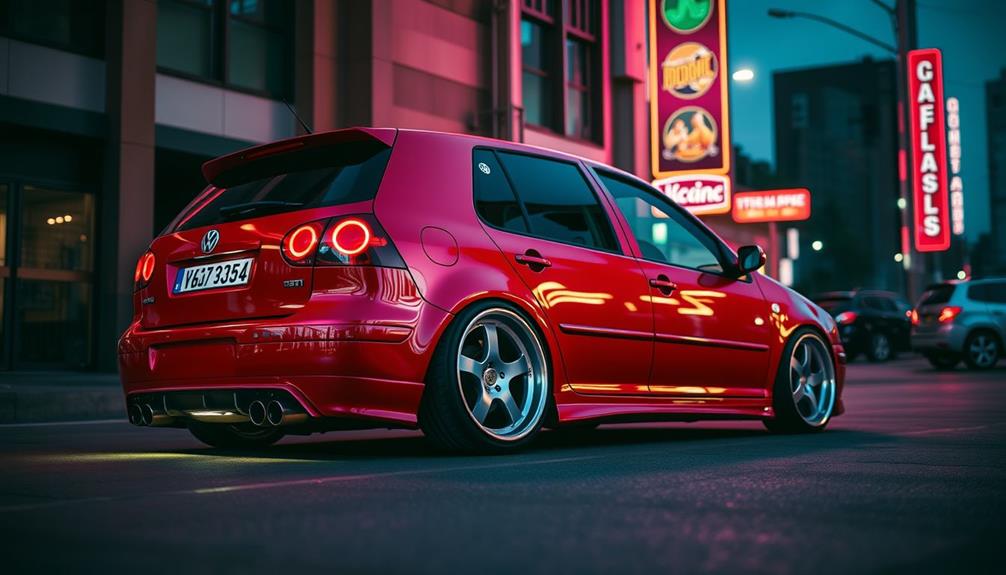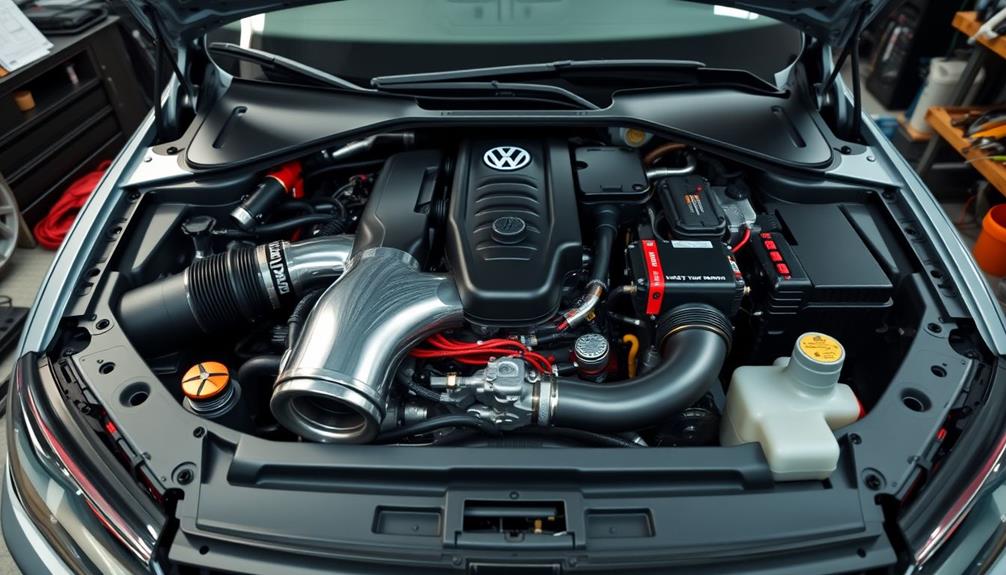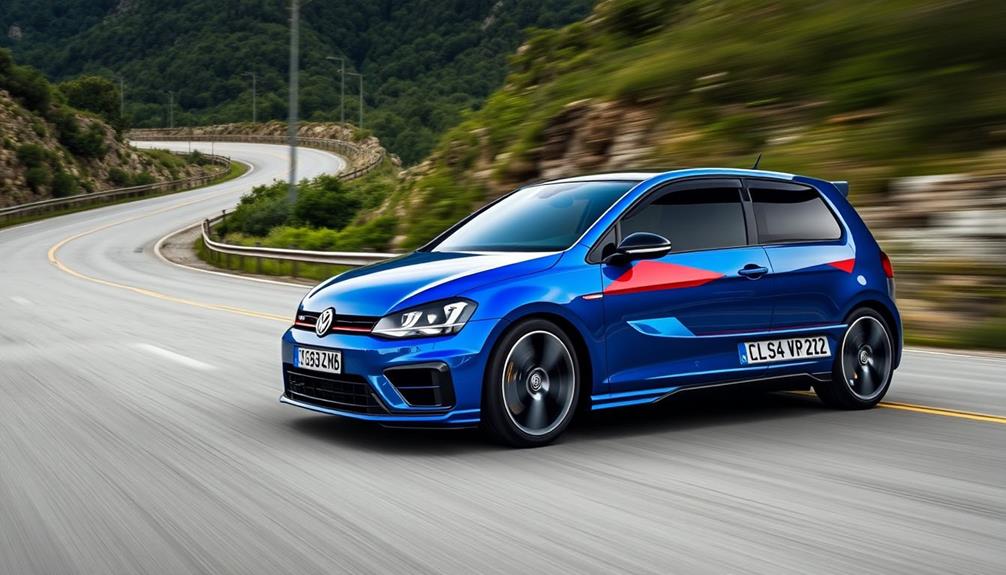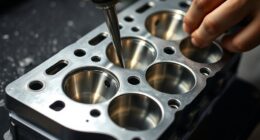Tuning your Volkswagen Caddy MK1 can greatly boost its performance while preserving that classic vibe. Start by upgrading the exhaust system to enhance airflow and reduce back pressure. Consider installing larger carburettors to improve throttle response and adding big valve cylinder heads for better airflow. Engine swaps, like fitting the 2.0L 16V from the Mk3 Golf GTI, can elevate your power output, but don't forget to upgrade your suspension for balance. With the right modifications, you'll revamp your ride into a true performance vehicle. There's a wealth of tips and tricks to discover, ready to enhance your tuning journey.
Key Takeaways
- Upgrade the exhaust system to enhance airflow, reduce back pressure, and improve overall engine performance in your Caddy MK1.
- Install larger carburettors for better fuel mixture intake, leading to noticeable horsepower gains during acceleration.
- Consider an engine swap with a 2.0L 16V ABF for significant performance improvements and a more spirited driving experience.
- Modify the suspension components to maintain balance and responsiveness, especially when upgrading to a heavier engine.
- Engage with online forums for expert tips on tuning, trusted companies, and community support throughout your modification journey.
Vehicle Specifications and History
Introducing the Volkswagen Caddy MK1, you'll discover a compact pickup truck that first hit the market in 1982 and quickly became a symbol of versatility and practicality.
Based on the Golf platform, this vehicle boasts a distinctive boxy design that appeals to both classic car lovers and modern tuners. Initially, the Caddy MK1 came equipped with a 1.6-liter diesel engine, but many enthusiasts have opted for the more powerful 1.9-liter diesel engine, enhancing performance for a better driving experience.
The vehicle specifications of the Caddy MK1 make it a favorite among DIY modifiers. Owners often immerse themselves in the engine bay, performing various upgrades that range from improved fuel delivery systems to suspension enhancements.
These performance upgrades not only boost the truck's capabilities but also allow you to tailor the vehicle to your personal driving style.
With a loyal following, the Caddy MK1 has secured its place in the tuning community. You'll find it frequently showcased at car shows and events, celebrating its unique blend of vintage charm and customization potential.
Whether you're looking to restore or modify, the Caddy MK1 offers endless possibilities for the passionate enthusiast.
Essential Performance Modifications

When it comes to enhancing your Volkswagen Caddy MK1's performance, several vital modifications can make a notable difference.
Start by upgrading the exhaust system; this can greatly enhance airflow and reduce back pressure, leading to improved engine responsiveness.
Next, consider installing larger carburettors. They allow for a greater fuel mixture intake, resulting in noticeable horsepower gains.
You might also want to upgrade to big valve cylinder heads to increase airflow, but verify they're compatible with your exhaust system for ideal results.
If you have a non-turbo 1.9 IDI engine, mechanical modifications like adjusting fuel delivery and governor settings can effectively boost your power output.
Additionally, utilizing ratio rockers is a cost-effective way to improve camshaft lift without needing a fully rebuilt engine.
For a modern twist, chip tuning can refine your car's performance by adjusting the engine's parameters for better fuel efficiency and power output.
Each of these modifications plays a key role in transforming your MK1 into a more powerful and responsive vehicle.
With these enhancements, you'll truly enjoy the driving experience of your classic Volkswagen Caddy MK1.
Community Insights and Tips

Engaging with online forums and local clubs focused on VW Caddy MK1 tuning opens up a wealth of knowledge and support from fellow enthusiasts. These communities often share invaluable insights about their project cars, helping you navigate the tuning journey with confidence.
Here's a handy table summarizing key community tips:
| Tip | Description | Additional Notes |
|---|---|---|
| Start with Basics | Focus on fuel delivery and pump pressure | Essential for performance |
| Understand Mechanical Work | Hands-on mods are vital for tuning MK1 Caddy | Non-ECU engines require it |
| Seek Recommendations | Find trusted tuning companies | Look for Golf GTI specialists |
| Discuss Engine Specs | Confirm your engine type before upgrades | Tailor advice to your needs |
| Explore Bolt-On Options | Consider options like twin Weber carbs | Great for horsepower gains |
Engine Swap Considerations

Choosing the right engine for your Volkswagen Caddy MK1 can make a significant difference in performance and driving experience. An engine swap can provide a substantial power increase, transforming your classic van into a spirited ride. One popular choice is the 2.0L 16V ABF engine from the Mk3 Golf GTI. This engine not only fits well but also offers a manageable installation process with the correct mounts and modifications.
However, it's essential to take into account the vehicle's weight distribution. Adding a heavier engine can affect handling, so make sure that your suspension is up to the task. You might need to upgrade components to maintain balance and responsiveness.
Additionally, pay close attention to the wiring harness and ECU integration. A well-integrated system is critical for the overall performance and reliability of your new setup.
Don't forget to upgrade the fuel system, including the fuel pump and lines, to support the increased power output. By carefully evaluating these factors, you'll guarantee that your engine swap enhances your Caddy MK1's performance without compromising its classic charm.
Additional Upgrade Options
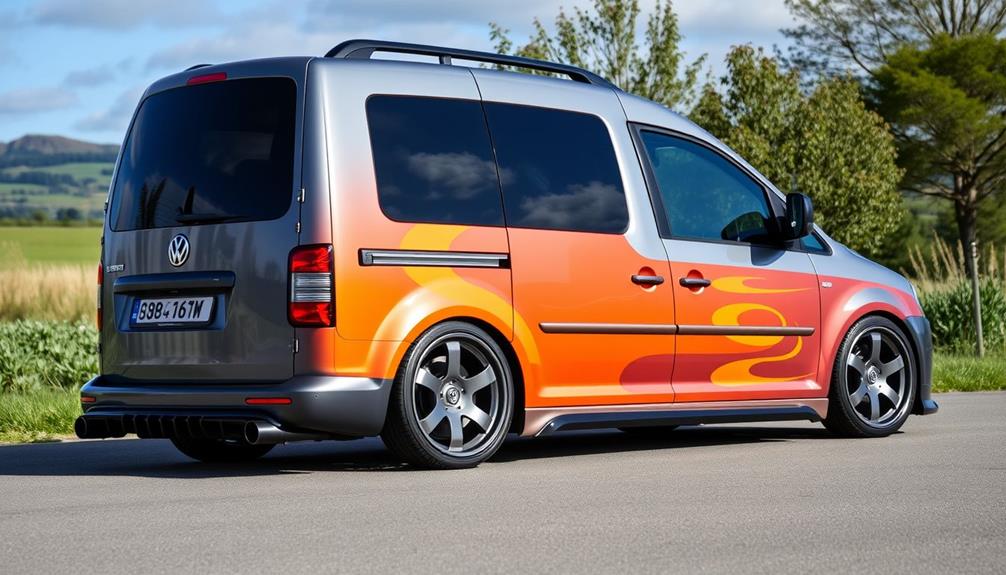
To boost your Volkswagen Caddy MK1's performance even further, consider exploring a range of additional upgrade options that can elevate your driving experience. Each upgrade brings distinct advantages that can greatly enhance your van's capabilities.
| Upgrade Option | Benefits |
|---|---|
| Performance Exhaust System | Enhances airflow, reduces back pressure, and improves efficiency. |
| Larger Carburettor | Increases fuel mixture intake for better throttle response. |
| Big Valve Cylinder Heads | Provides improved airflow with sizes up to 40mm x 35.5mm, boosting performance. |
| Ratio Rockers | Increases camshaft lift for better valve opening and higher horsepower. |
| Lightened Flywheels | Reduces rotating weight for improved acceleration and responsiveness. |
Each of these upgrades targets a specific aspect of your engine's performance, making it easier to achieve the power and responsiveness you desire. Upgrading to a performance exhaust system not only enhances airflow but also reduces back pressure, while a larger carburettor improves power output. Big valve cylinder heads further amplify engine efficiency. Consider these options carefully to create the ultimate driving experience with your Caddy MK1.
Frequently Asked Questions
What Is the Fastest VW Caddy?
The fastest VW Caddy often features extensive engine modifications, like a Porsche 3.2-litre V6. With the right upgrades, you can push speed limits beyond 130 mph, making it competitive with modern performance vehicles.
Can You Remap a VW Caddy?
Imagine cruising in a classic van, feeling the power beneath you. Unfortunately, you can't remap a VW Caddy's non-turbo diesel engine, but you can boost performance with mechanical upgrades like a larger carburettor and better exhaust.
How Much Horsepower Does a VW Caddy Have?
A stock VW Caddy typically has around 54 horsepower. If you upgrade to a 1.9 diesel engine, you can boost that to about 68 horsepower. Modifications might even push it over 100 horsepower.
Is a VW Caddy a Good First Car?
Imagine cruising around town in a VW Caddy as your first car. Its reliability, ease of maintenance, and fuel efficiency make it a fantastic choice for new drivers. You'll love the maneuverability and unique style!
Conclusion
In revamping your Volkswagen Caddy MK1, you're not just tuning a classic van; you're breathing new life into a piece of automotive history. With the right performance modifications and upgrades, you can transform it into a reliable ride that turns heads. Don't forget to tap into community insights—you'll find that sharing tips is as easy as posting a tweet. Embrace the journey, and soon you'll be cruising the streets with a vintage vibe and modern performance.



